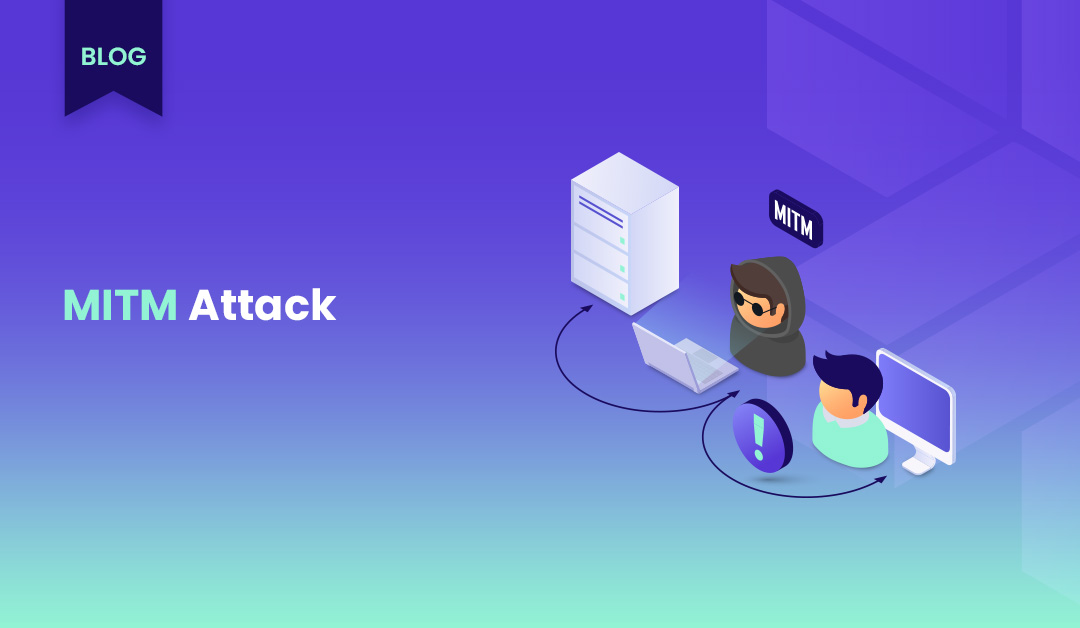MITM Attack: Understanding Man-in-the-Middle Attacks and Protection Methods (WIP)
What is a Man-in-the-Middle (MITM) Attack? A Man-in-the-Middle (MITM) attack is a cyber threat where an attacker secretly intercepts and possibly alters the communication between two parties who believe they are directly communicating with each other. These attacks can occur in various forms, including eavesdropping on conversations, intercepting data transfers, or injecting malicious content into […]
Author
Date
Category
All Categories
- AI-powered security
- Attacks & Threats
- Cybersecurity
- Hybrid Cloud
- Network
- Network Firewall
- Network Protection
- News
- Remote Workforce
- Security
- Zero Trust
Contents
Popular Posts
Product
Join the Newsletter

What is a Man-in-the-Middle (MITM) Attack?
A Man-in-the-Middle (MITM) attack is a cyber threat where an attacker secretly intercepts and possibly alters the communication between two parties who believe they are directly communicating with each other. These attacks can occur in various forms, including eavesdropping on conversations, intercepting data transfers, or injecting malicious content into the communication. MITM attacks can target any digital communication channel, such as emails, web traffic, or instant messaging.
The Importance of Understanding MITM Attacks
Understanding MITM attacks is crucial for both individuals and organizations. These attacks can lead to severe consequences, such as unauthorized access to sensitive data, identity theft, financial loss, and damage to a company’s reputation. By knowing how these attacks work, you can better protect yourself and your organization from potential threats.
Types of MITM Attacks
MITM attacks come in various forms. Some of the most common types include:
- IP Spoofing: The attacker impersonates a legitimate IP address to gain access to a communication channel.
- DNS Spoofing: The attacker redirects a user’s request to a fake website by altering DNS records.
- HTTPS Spoofing: The attacker intercepts and decrypts secure communications by exploiting SSL vulnerabilities.
- Wi-Fi Eavesdropping: The attacker intercepts unencrypted data over unsecured Wi-Fi networks.
How MITM Attacks Work
MITM attacks typically follow a pattern where the attacker places themselves between the two parties communicating. The attacker can then intercept, modify, or monitor the information being exchanged. This can be done by exploiting vulnerabilities in the network, using fake security certificates, or through phishing tactics. The key to a successful MITM attack is that the victim remains unaware that their communication has been compromised.
Common MITM Attack Techniques
Some common techniques used in MITM attacks include:
- Packet Sniffing: Capturing data packets as they travel across a network.
- Session Hijacking: Taking control of a user’s session by stealing their session token.
- SSL Stripping: Downgrading a secure HTTPS connection to an insecure HTTP connection.
- Email Hijacking: Intercepting and altering email communications between two parties.
How to Detect MITM Attacks
Detecting MITM attacks can be challenging, but there are signs and tools to help:
Signs and Symptoms of a MITM Attack
- Unexpected disconnections during communication.
- Unusual login locations or unauthorized access attempts.
- Suspicious certificate warnings from browsers.
Tools and Techniques for Detection
- Network traffic analysis tools to monitor for unusual activity.
- Intrusion detection systems (IDS) to alert on suspicious patterns.
- Regularly checking the authenticity of SSL certificates.
Preventing MITM Attacks
To prevent MITM attacks, follow these best practices:
- Best Practices for Secure Communication: Use encrypted communication channels and avoid unsecured public Wi-Fi networks.
- Use of Encryption and VPNs: Encrypt data using strong encryption protocols and utilize Virtual Private Networks (VPNs) to secure connections.
- Importance of Regular Software Updates and Security Patches: Keep all software and systems up to date to patch vulnerabilities that attackers could exploit.
Responding to MITM Attacks
If you suspect a MITM attack, take immediate action:
- Immediate Actions to Take: Disconnect from the network, change passwords, and alert your IT security team.
- Steps for Reporting and Mitigating Damage: Report the incident to your organization’s security team and law enforcement if necessary. Work with security experts to assess the damage and prevent future occurrences.
- Recovery and Future Prevention Strategies: Review security practices, implement stronger authentication methods, and conduct regular security audits.
Real-Life Examples of MITM Attacks
Real-life examples of MITM attacks highlight the severity of these threats:
- The 2011 DigiNotar Attack: Attackers compromised the Dutch certificate authority DigiNotar, issuing fraudulent certificates that were used in MITM attacks against users in Iran.
- The 2013 Facebook MITM Attack: Attackers in Syria used MITM techniques to intercept and manipulate Facebook communications, stealing user credentials and accessing private information.
Man-in-the-Middle attacks are a significant threat in today’s digital landscape. Understanding how these attacks work, how to detect them, and how to prevent them is essential for maintaining secure communications. Stay vigilant, keep your software updated, and always use encrypted channels to protect against these dangerous attacks.
Protect your business from MITM attacks today. Reach out to Timus Networks to learn how our advanced security solutions can keep your communications safe from prying eyes. Stay secure, stay connected.
FAQs
Detecting a MITM attack can be difficult since attackers are often stealthy, but there are signs to look out for. Unusual connection drops, strange certificate warnings, or seeing unexpected login attempts from different locations are all red flags. You can also use network monitoring tools or intrusion detection systems to spot unusual activity in your traffic.
MITM attacks can result in stolen sensitive data, such as login credentials or personal information. For businesses, this could lead to financial loss, identity theft, and even damage to reputation. Hackers can also use MITM attacks to inject malicious software into communication channels, causing further harm.
To protect yourself, always use secure, encrypted communication channels, especially when accessing sensitive data. Avoid public Wi-Fi for sensitive tasks, and use a Virtual Private Network (VPN) to secure your connection. Also, ensure that websites you visit have legitimate SSL certificates (the padlock icon in the browser’s address bar).
While it’s hard to completely eliminate the risk, you can greatly reduce the chances of a MITM attack by practicing good security habits. Use strong encryption, keep your software up to date, and educate your team about security risks and phishing tactics.
Immediately disconnect from the network if you suspect a MITM attack. Change your passwords, notify your IT security team, and check for any unauthorized access to your accounts. It’s also wise to review your network security practices to prevent future attacks.
Yes, public Wi-Fi is a hot spot for MITM attacks because these networks are often unsecured. Hackers can easily intercept data being transmitted over these networks, so it’s important to avoid doing sensitive tasks, like online banking or logging into work accounts, over public Wi-Fi unless you’re using a VPN.
The best way to secure communication is through encryption. Use HTTPS for web traffic, VPNs for remote access, and ensure email communications are encrypted. Implementing two-factor authentication (2FA) adds another layer of protection by making it harder for attackers to hijack sessions.
Get Started with Timus
Zero Trust. Adaptive Cloud Firewall. Secure Remote Access. In one.
